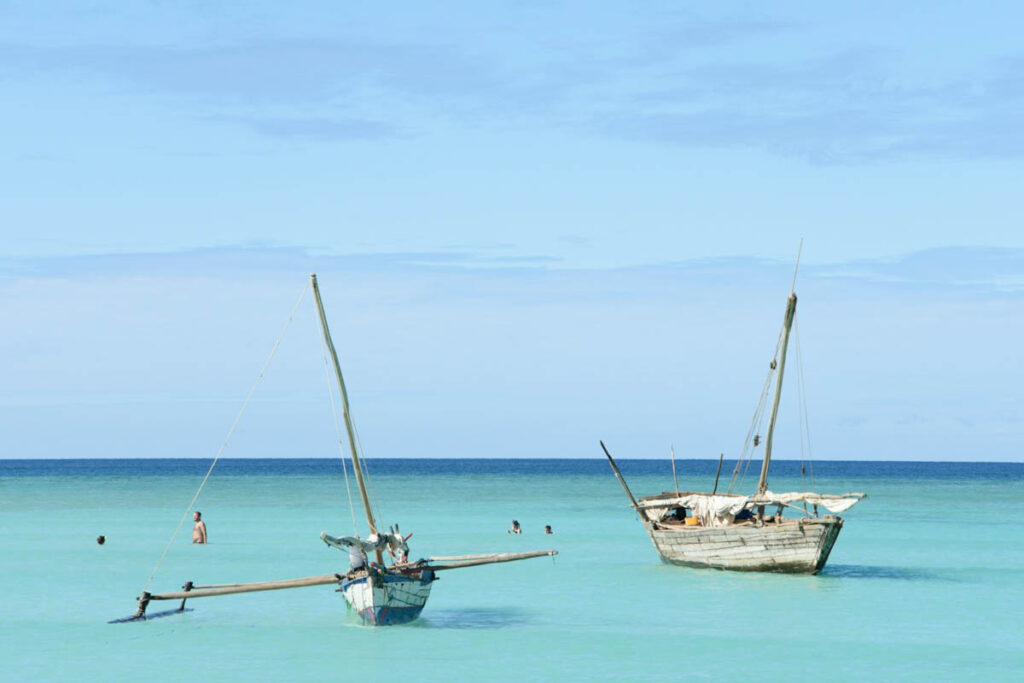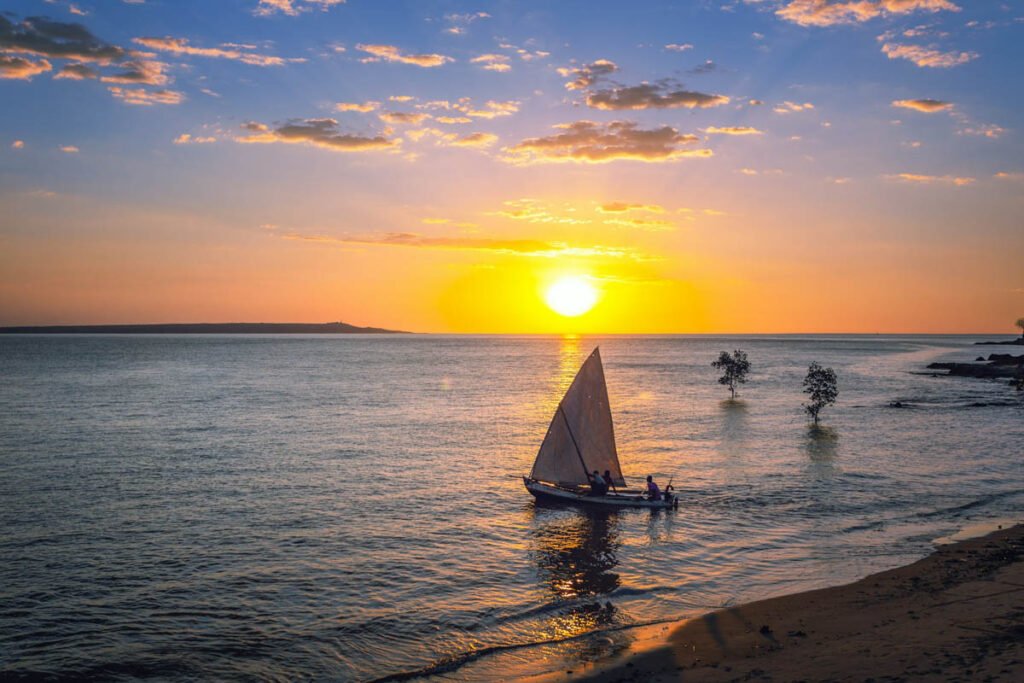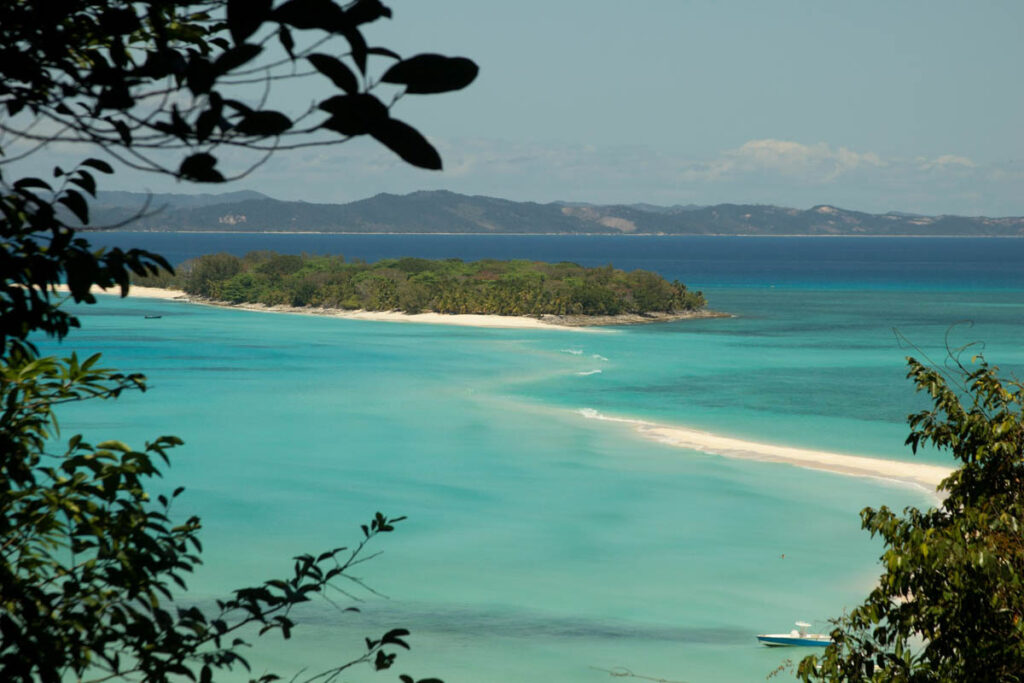Madagascar, an island nation in the Indian Ocean, has long captivated travelers with its breathtaking landscapes and unique biodiversity. But beneath the surface lies a world equally as mesmerizing – the underwater realm teeming with vibrant coral reefs, diverse marine life, and intriguing dive sites. Let’s delve into the depths of Madagascar’s scuba diving scene, uncovering its top 10 dive sites, the best time to travel, and what makes it stand out from other diving destinations.

Photo by Sandy Ravaloniaina on Unsplash
Top 10 Dive Sites in Madagascar:
- Nosy Tanikely Marine Reserve: Located near Nosy Be, this marine reserve boasts crystal-clear waters, colorful coral gardens, and an abundance of marine life, including reef sharks, turtles, and rays.
- The Mitsio Islands: These remote islands offer pristine diving conditions with visibility often exceeding 30 meters. Divers can explore underwater pinnacles, swim-throughs, and encounter schools of pelagic fish.
- Nosy Sakatia: Known as the “Orchid Island,” Nosy Sakatia features shallow reefs ideal for novice divers and steep drop-offs catering to the more experienced. Expect encounters with nudibranchs, seahorses, and octopuses.
- Radames Archipelago: This group of islands offers a variety of dive sites, including walls, caves, and coral gardens. Keep an eye out for humpback whales during their migration season.
- Toliara Reef: Located off the southwest coast, Toliara Reef is a haven for macro photography enthusiasts. Discover rare critters like frogfish, ghost pipefish, and colorful nudibranchs.
- The Nosy Hara Archipelago: Dive into the untouched waters surrounding this archipelago, where healthy coral reefs and diverse marine species await. Hammerhead sharks and manta rays occasionally grace these waters.
- The Mitsio Pass: Dive into the currents of Mitsio Pass for an adrenaline-filled experience. Encounter large pelagics such as barracudas, tuna, and sometimes even whale sharks.
- Anakao: Known for its stunning coral formations and underwater caves, Anakao offers a unique diving experience. Dive alongside green turtles, moray eels, and a plethora of reef fish.
- Maroantsetra: Explore the waters off Maroantsetra to discover thriving coral reefs and an array of marine life, including colorful reef fish and elusive macro critters.
- Sainte Marie Island: Dive among historic shipwrecks and vibrant coral gardens surrounding Sainte Marie Island. Encounter pods of dolphins and, if you’re lucky, elusive dugongs.

Photo by karimjy LOULOUA on Unsplash
Best Time to Travel:
Madagascar’s diving season typically runs from April to December when the weather is dry and visibility is at its best. During this time, water temperatures range from 25°C to 29°C, providing comfortable conditions for diving. The months of September to November are particularly favorable for encountering large pelagic species such as whale sharks, manta rays, and humpback whales.
What Sets Madagascar Apart:
Madagascar’s appeal as a scuba diving destination lies in its untouched and unspoiled underwater ecosystems. Unlike more heavily trafficked dive spots, Madagascar’s dive sites offer a sense of isolation and pristine beauty. Divers here have the opportunity to explore reefs that have been relatively untouched by human activity, resulting in vibrant coral formations and abundant marine life.
Moreover, Madagascar’s unique biodiversity extends below the surface, with a high concentration of endemic species found only in its waters. From colorful reef fish to rare macro critters, each dive offers the chance to encounter species found nowhere else on earth.
In addition to its natural wonders, Madagascar’s diving scene benefits from a variety of dive experiences catering to all skill levels. Whether you’re a novice diver looking to explore shallow reefs or an experienced enthusiast seeking adrenaline-pumping drift dives, Madagascar offers something for everyone.
In conclusion, Madagascar’s scuba diving scene is a hidden gem waiting to be discovered. With its pristine dive sites, diverse marine life, and unique biodiversity, it promises an unforgettable underwater adventure for divers of all levels. So pack your gear, dive into the azure waters of Madagascar, and prepare to be enchanted by its underwater wonders.







